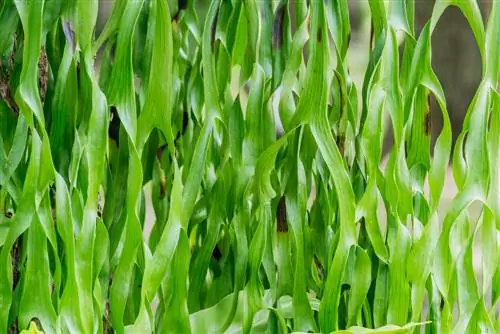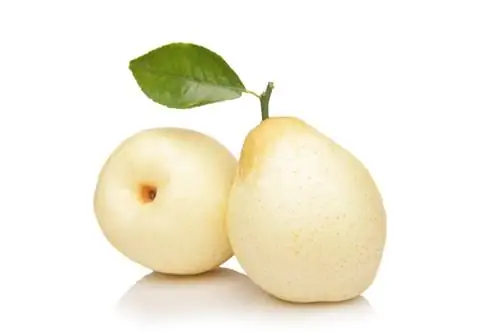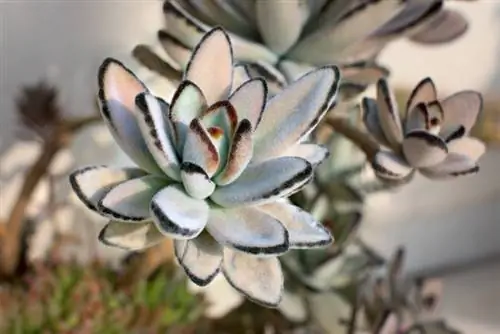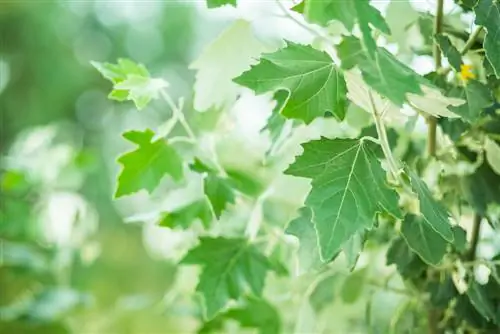- Author admin [email protected].
- Public 2023-12-16 16:46.
- Last modified 2025-01-23 11:21.
Strictly speaking, the indoor fern is not really a specific type of plant, but rather the generic term for all types of ferns that are usually cultivated as houseplants. Many of these fern species can be easily identified based on their decorative fronds, but other varieties are similar in their visual appearance.

What types of room fern are there?
House fern species are diverse, some common and decorative varieties are the staghorn fern (Platycerium), the deer's tongue fern and the nest fern. They prefer shady locations, high humidity and low-lime water.
The common cultural needs of all room fern species
Since ferns do not like to be in a location with direct sunlight and also prefer a rather high level of humidity, the bathroom is usually an ideal location for many indoor ferns. Indoor ferns should generally only be watered with very low-lime water. Species of tree ferns such as the staghorn fern in particular can be easily cultivated as attractive hanging plants at lofty heights. The visually decorative hanging basket planting is also recommended for the relatively poisonous fern species so that the leaves cannot be accidentally consumed by pets or small children.
The staghorn fern
The staghorn ferns (Platycerium) are part of the spotted fern family. These ferns, which have particularly characteristically shaped fronds, occur naturally in the tropical zones of the following distribution areas:
- Africa
- South America
- Southeast Asia
- New Guinea
- Australia
With their compact growth and a maximum size of around 50 cm, the plants are very suitable for indoor cultivation. Staghorn ferns grow epiphytically and usually hold on to a tree trunk or branch with so-called shield leaves. Indoors, the staghorn ferns, which are relatively easy to care for indoor ferns, can be cultivated well on rough pieces of bark (€14.00 on Amazon) in a hanging basket filled with peat.
The Deertongue Fern
Like the staghorn ferns, the deer's tongue fern is largely easy to care for. It is easily identified by its lanceolate leaves with their shiny surface. In this type of fern, the fronds initially grow upright before bending downward as they grow larger. The scaly, light brown rhizome usually emerges visibly from the substrate in deer tongue farming.
The Nest Fern
The nest fern forms elongated, lancet-shaped leaves similar to the deer's tongue farm, but in contrast to the leaves of the deer's tongue fern, these are not targeted, but grow in a "nest shape" directly from the base of the plant. The plant, which grows without secondary shoots, grows over the years as a single rosette (hence the name “nest fern”) and forms leaves that are up to 1 m long and about 20 cm wide.
Tip
The different types of indoor ferns differ not only in terms of the shape of the fronds, but also in their size. Be sure to take this factor into account when selecting a type of fern for a specific location in the house.






